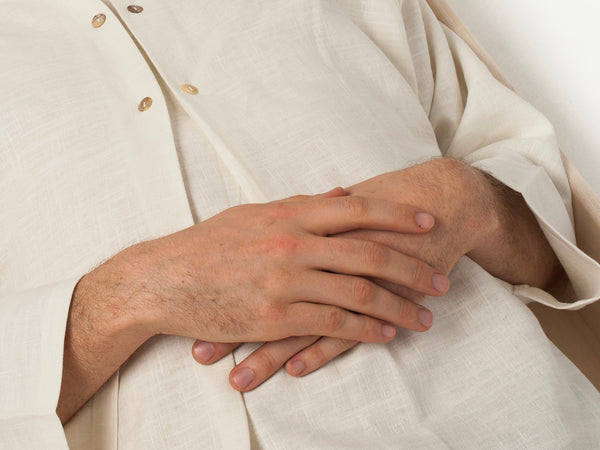Embalming and thanatopraxy: what's the difference?
History
The history of embalming goes back a long way. All over the world, different civilisations found different ways to stop the decomposition process. In addition to the most famous example from Egypt, the Romans, Greeks, Persians and Syrians were also busy preserving their deceased. Of all the different techniques, it was not until around 1800 that the direction of what eventually became today's thanatopraxy was set. The injection of preservative fluid, initially based on acetate solution and aluminium salt, began with the French army doctor Gannal. Throughout his life, he optimised this substance more and more. This use became increasingly popular during, among other things, the American Civil War, when the bodies of the deceased often had to be transported over enormous distances. The first training school for these treatments was founded in 1852 by a professor. This use was spread and improved further and further until it was used on a large scale in America, England and France. After the Second World War, the use was brought to the Netherlands, but was not warmly appreciated. It was not until 1991 that it was permitted by law, but only in exceptional cases: for members of the Royal Family, deceased persons who were made available to science, deceased persons who had to be transported abroad and people who died at sea. Finally, in 2010, with the possibility of the light embalming alternative thanatopraxy, light embalming was generally permitted by law. For those interested, we have placed the current legislation at the bottom of this page.
What are embalming and thanatopraxy?
Embalming is an act in which the decomposition process is slowed down, or even temporarily stopped. Full embalming can preserve a body for years. However, this is not the form of embalming that is currently generally permitted in the Netherlands. The lighter form of embalming, Thanatopraxy, causes a delay in the decomposition process of about 10 days. These acts are almost the same, only the dosage differs. Embalming has a visual effect in addition to preservation. Because the blood circulation stops after death, dark spots normally appear on the body, known as livid spots. This happens because the blood sinks to the lowest parts of the body. By using red dye in the preservative fluid, embalming ensures that these spots disappear and the body gets a natural color. In other places where blood clots form and discoloration occurs, the blood vessels are also filled again, which restores the color. Because the body's moisture loss is compensated for, the face does not become narrower. It is also possible to enhance these visual effects with cosmetic products. For example, in the case of bodily damage due to an accident, most thanatopractors can stitch or glue the mutilations. Because the decomposition processes are slowed down, the body also becomes more hygienic. Another major advantage of the treatment is that no cooling elements need to be used. By slowing down the decomposition process, there are far fewer problems with corpse fluid, which is a pleasant side effect of using a shroud. In addition, in some people's eyes, the more natural, softer appearance of the body fits in well with the idea of a shroud ; a more lively body and the preservation of character traits make saying goodbye easier. In some cases, the visual effects of embalming make it easier for relatives to say goodbye to the deceased with dignity. However, there are also critics who believe that a body in the process of dismantling can help to raise awareness of the moment of saying goodbye. For others, however, this appearance can actually get in the way of the farewell they would like. If you are considering thanatopraxy, please consult with the other surviving relatives to determine what everyone finds most pleasant.
How do embalming and thanatopraxy work?
Embalming and Thanatopraxy involve injecting a preservative fluid into the blood vessels of a deceased person. This fluid is introduced through an artery in the groin or neck of the deceased, while the existing blood is drained through another vein. The small openings that are made to do this can easily be closed and concealed. In order to properly distribute the fluid, the limbs are massaged during this procedure. The duration of this treatment depends on the body's size, but it usually takes about three hours. For larger bodies, more fluid is used and the procedure takes longer. Under the right circumstances, the treatment can be performed at home, although in most cases it is performed on location by a specialist. It is important to know that full embalming is only permitted in exceptional circumstances. Thanatopraxy is a light form of embalming that has been generally permitted in the Netherlands since 2010.
What is the difference between embalming and Thanatopraxy?
Full embalming is a treatment that allows for long-term preservation. This involves several months or even several years. This embalming is sometimes, in exceptional cases, used for members of the Royal Family and prominent clergy. An exception is also made for deceased persons who have to be taken abroad, or when there is repatriation. When a body is preserved for science, it is often also fully embalmed. The biggest difference with Thanatopraxy is that a different fluid is used for this, with a much lower concentration of active substance. This substance is only effective for about 10 days. This also means that there is a much lower concentration of substances harmful to the environment, an amount that is ultimately easier for nature to absorb.
What should I pay attention to?
The result of embalming and Thanatopraxy can be influenced by various factors. It is not often that an embalming turns out differently than expected, but no full guarantee can be given. When this is the case, it is usually due to the cause of death and the medications that were used. Therefore, always discuss this thoroughly with the specialist. With regard of a wake at home, there are also a number of things to take into account; to prevent changes in the face, it is advisable to place the head higher than the torso. You can best do this by providing extra support for both the head and the shoulders. We also recommend that you prevent direct sunlight from shining on the deceased, as this causes accelerated dehydration and discolouration. Our final advice concerns flies, as they lay eggs in the body when given the chance. Therefore, try to ensure that flies do not have access to the deceased.
Cost of Thanatopraxy
For those interested in Thanatopraxy, it is important to know what such a treatment adds to the cost picture. In general, you can expect a price between €500 and €750. There may be small differences depending on the thanatopractor or the fluid used. If there is no thanatopractor near you, you may also have to take into account transport costs. It is important to pay close attention to the choice you make in thanatopractor. There are no specific legal requirements for practicing this profession. However, because it is an act that affects such a sensitive part of the body, it is extremely important that a professional is involved. We therefore recommend that you find someone through your funeral director. No price indication can be given for full embalming, as this is not arranged individually. If it is necessary for repatriation, this is done through the funeral insurance, and in the case of a body that is preserved for science, this is done through the research institute.
Is embalming harmful to the environment?
The active substance in the most commonly used preservative is Formalin. This is a chemical substance that can be harmful to the environment in large quantities. According to thanatopraxia , the concentration of Formalin in the body is approximately 0.2 to 0.3%, which escapes from the body as a gas after three days. In this quantity, this would not cause any damage to the environment. Only when too many embalmed bodies are buried in the same cemetery could this possibly cause damage to the groundwater. However, this can be prevented by properly organizing the territory. In addition, crematoria in the Netherlands must meet strict requirements regarding air filters. These requirements ensure that the filters in the Netherlands are good enough to minimize the environmental damage of embalming. Please note that Rens de Peijper's findings only apply to liquids in which the active substance is Formalin.
Preservation and Natural Burial
The way in which Thanatopraxy is dealt with varies among natural burial grounds. There are a number of natural burial grounds that also bury lightly embalmed bodies, such as Weverslo, Maashorst and Heidepol. However, there are also a number that do not do this for environmental reasons, and a number that do not do this purely on the basis of a different ideology. Often the vision of a natural burial ground is focused on a 'natural' funeral, whereby this artificial preservation is then seen as something unnatural. If you want to choose a natural burial ground, always consult the organisation about their ideas about embalming.
The Benefits of Thanatopraxy on a Shroud
Embalming makes the body of a deceased person more approachable, as the body becomes more hygienic and softer in appearance. This does not mean that the deceased looks completely lifelike, but that a more natural colour is retained. This more natural, softer appearance fits well with the idea of a shroud; a more lively body and the retention of character traits makes saying goodbye easier. Another major advantage of the treatment is that no cooling elements need to be used. By slowing down the decomposition process, there are far fewer problems with corpse fluid, which is a pleasant side effect of using a shroud.
Current legislation regarding Embalming:
Chapter VI. Special provisions Article 71.
1. A corpse shall not be embalmed or subjected to any other preserving process that is not aimed at using parts of the corpse pursuant to the Organ Donation Act. In exceptional cases, Our Minister of Health, Welfare and Sport may grant an exemption from this prohibition. The exemption shall state the manner and place of the funeral. Articles 12-15 shall apply accordingly.
2. The prohibition referred to in the first paragraph shall not apply if the body is intended for dissection or is sent abroad.
3. Article 69 shall apply mutatis mutandis. If the body is intended for dissection, only the second paragraph of that article shall apply mutatis mutandis.
4. Notwithstanding the first paragraph, a corpse may be subjected to a preservative treatment which has an effect for a maximum of ten days.
5. An operation as referred to in the fourth paragraph shall only take place after it has been established that removal of one or more organs as referred to in the Organ Donation Act will not take place.
6. Requirements may be imposed by ministerial regulation on the training and professional competence of those who carry out the processing referred to in the fourth paragraph, as well as on the method of processing.



